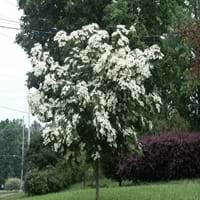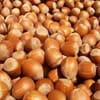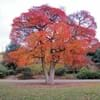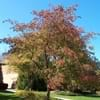Life Span
Perennial
Perennial
Origin
China, Japan, Korea
Hybrid origin
Types
Japanese dogwood, Chinese dogwood
Victoria Rhubarb
Colorado Red Rhubarb
Turkish Rhubarb
Habitat
Dappled Shade, Sunny Edge, Woodland Garden Canopy
gardens, Grassland, Humid climates, Tropical regions, Urban areas
USDA Hardiness Zone
5-8
5-8
Sunset Zone
2a, 2b, 3a, 3b, 4, 5, 6, 7, 8, 9, 14, 15, 16, 17
2b, 3a, 3b, 4, 5, 6, 7, 14, 15, 16, 17
Habit
Spreading
Clump-Forming
Flower Color
White, Green
Light Pink
Flower Color Modifier
Bicolor
Not Available
Leaf Color in Spring
Light Green
Green, Dark Red
Leaf Color in Summer
Green
Green, Dark Red
Leaf Color in Fall
Red, Purple, Burgundy
Green, Dark Red
Leaf Color in Winter
Not Available
Light Green
Leaf Shape
Obtuse
Compound
Plant Season
Spring, Summer, Fall, Winter
Spring, Summer, Fall
Sunlight
Full Sun, Partial Sun, Partial shade
Full Sun, Partial Sun
Growth Rate
Medium
Medium
Type of Soil
Loam
Clay, Loam
The pH of Soil
Acidic, Neutral
Acidic, Neutral, Alkaline
Soil Drainage
Well drained
Average
Bloom Time
Late Spring, Early Summer
Summer, Late Summer
Tolerances
Not Available
Drought
Where to Plant?
Ground
Ground
How to Plant?
Seedlings
Stem Planting
Plant Maintenance
Medium
Medium
Watering Requirements
Requires more often in extreme heat, Requires regular watering
Do Not over Water, Requires regular watering, Use Mulches to help prevent water loss during hot and windy weather, Water Deeply
In Summer
Lots of watering
Lots of watering
In Spring
Moderate
Moderate
In Winter
Average Water
Average Water
Soil pH
Acidic, Neutral
Acidic, Neutral, Alkaline
Soil Type
Loam
Clay, Loam
Soil Drainage Capacity
Well drained
Average
Sun Exposure
Full Sun, Partial Sun, Partial shade
Full Sun, Partial Sun
Pruning
Remove damaged leaves, Remove dead branches, Remove dead leaves
Remove damaged leaves, Remove dead branches, Remove dead leaves
Fertilizers
Ratio of 12-4-8 or 16-4-8
All-Purpose Liquid Fertilizer
Pests and Diseases
Crown Canker, Leaf spot, Scorch
Red blotch
Plant Tolerance
Drought
Drought
Flower Petal Number
Single
Not Available
Foliage Texture
Medium
Coarse
Foliage Sheen
Glossy
Glossy
Attracts
Birds
Not Available
Allergy
Mild Allergen
Skin irritation
Aesthetic Uses
Bonsai, Ornamental use
Showy Purposes
Beauty Benefits
Not Available
Not Available
Environmental Uses
Air purification
Air purification
Medicinal Uses
Diarrhea, Dysentry, Eczema
Not Available
Part of Plant Used
Fruits, Leaves
Whole plant
Other Uses
Used as favourite late summer fruits, Used for mallets
Culinary use, Used as Ornamental plant
Used As Indoor Plant
Yes
No
Used As Outdoor Plant
Yes
Yes
Garden Design
Feature Plant, Shade Trees
Feature Plant, Mixed Border
Botanical Name
CORNUS kousa
RHEUM 'Ace of Hearts'
Common Name
Chinese Dogwood, Korean Dogwood
Ace of Hearts Ornamental Rhubarb, Ornamental Rhubarb
In Hindi
Chinese Dogwood
सजावटी प्रकार का फल
In German
Chinese Dogwood
Ornamental Rhabarber
In French
Dogwood chinoise
rhubarbe ornementale
In Spanish
Dogwood chino
Ornamental de ruibarbo
In Greek
κινεζική Dogwood
καλλωπιστικά Ραβέντι
In Portuguese
Dogwood chinês
ornamental ruibarbo
In Polish
Chiński Dereń
ozdobne Rabarbar
In Latin
Dogwood Chinese
decentius Rhubarb
Phylum
Magnoliophyta
Tracheophyta
Class
Magnoliopsida
Not Available
Order
Cornales
Caryophyllales
Family
Cornaceae
Polygonaceae
Clade
Angiosperms, Asterids, Eudicots
Angiosperms, Core eudicots, Eudicots
Tribe
Not Available
Not Available
Subfamily
Cornoideae
Not Available
Number of Species
Not Available
Importance of Chinese Dogwood and Ornamental Rhubarb
Want to have the most appropriate plant for your garden? You might want to know the importance of Chinese Dogwood and Ornamental Rhubarb. Basically, these two plants vary in many aspects. Compare Chinese Dogwood and Ornamental Rhubarb as they differ in many characteristics such as their life, care, benefits, facts, etc. Every gardener must at least have the slightest clue about the plants he wants to plant in his garden. Compare their benefits, which differ in many ways like facts and uses. The medicinal use of Chinese Dogwood is Diarrhea, Dysentry and Eczema whereas of Ornamental Rhubarb is Not Available. Chinese Dogwood has beauty benefits as follows: Not Available while Ornamental Rhubarb has beauty benefits as follows: Not Available.
Compare Facts of Chinese Dogwood vs Ornamental Rhubarb
How to choose the best garden plant for your garden depending upon its facts? Here garden plant comparison will help you to solve this query. Compare the facts of Chinese Dogwood vs Ornamental Rhubarb and know which one to choose. As garden plants have benefits and other uses, allergy is also a major drawback of plants for some people. Allergic reactions of Chinese Dogwood are Mild Allergen whereas of Ornamental Rhubarb have Skin irritation respectively. Having a fruit bearing plant in your garden can be a plus point of your garden. Chinese Dogwood has showy fruits and Ornamental Rhubarb has showy fruits. Also Chinese Dogwood is not flowering and Ornamental Rhubarb is not flowering . You can compare Chinese Dogwood and Ornamental Rhubarb facts and facts of other plants too.





